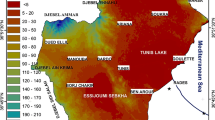Abstract
A common problem faced by decision makers is choosing the best alternative from among many. Traditionally, such decisions in the public arena were made using benefit-cost analysis, which involves the conversion of all costs and benefits associated with a project into monetary terms. But public projects often have a variety of economic, ecological, social and political objectives, many of which cannot or perhaps should not be converted to monetary terms. In such projects decisions must be made based on multiple, even conflicting objectives. Multiple criteria decision making (MCDM) methods are widely used for such decisions. However, a common disadvantage among many such methods available in the literature is that they require input from a real decision maker. This paper presents the development and application of an expert system based on fuzzy set theory and IF-THEN rules. The system mimics a real decision maker. Along with two conventional MCDM methods the developed expert system was applied on a data set from the Columbia River Basin salmon recovery plan to assess its potential usefulness as a decision-making tool for natural resource projects. The results suggest that the fuzzy expert system is easy to develop and makes better decisions than the other two conventional MCDM methods used.
Similar content being viewed by others
References
Burkhardt, D. G. and P. P. Bonissone (1992), 'Automated Fuzzy Knowledge Base Generation and Tuning', IEEE Inter. Conf. on Fuzzy Systems. San Diego, pp. 179–188.
Chen, S. J. and C. L. Hwang (1992), Fuzzy Multiple Attribute Decision Making-Methods and Applications. New York: Springer-Verlag.
Dror, M., P. Shoval and A. Yellin (1991), 'Multiobjective Linear Programming', Decision Support Systems 7, 221–232.
Hwang, C. L. and A. S. M. Masud, in collaboration with S. R. Paidy and K. Yoon (1979), Multiple Objective Decision Making-Methods and Applications: A State-of-the-Art Survey. New York: Springer-Verlag.
Hwang, C. L. and K. Yoon (1981), Multiple Attribute Decision Making-Methods and Applications. New York: Springer-Verlag.
Lieberman, E. R. (1991), 'Soviet Multi-Objective Mathematical Programming Methods: An Overview', Management Science 37(9), 1147–1165.
MacCrimmon, K. R. (1968), 'Decision Making Among Multiple-Attribute Alternatives: A Survey and Consolidated Approach', RAND Memorandum, RM-4823 ARPA.
Neitzel, L. A. and Lance, J. H., (1980), 'Fuzzy Cost/Benefit Analysis', in P. P. Wang and S. K. Chang, eds., Fuzzy Sets, Theory and Application to Analysis and Information Systems. New York: Plenum Press.
Nijkamp, P. and A. van Delft (1977), Multi-Criteria Analysis and Regional Decision Making. Netherlands: Martinus Nijhoff Social Sciences Division.
Nijkamp, P. and H. Voogd (1985), 'An Informal Introduction to Multicriteria Evaluation', in G. Fandel and J. Spronk, eds., Multiple Criteria Decision Methods and Applications. New York: Springer-Verlag.
Northwest Power Planning Council (1987), Columbia River Basin Fish and Wildlife Program. Portland, Oregon.
Northwest Power Planning (1991), Columbia Basin System Planning Salmon and Steelhead Production Plan-Integrated System Plan, No. 90-16. Portland, Oregon.
Reilly Gurocak, E. (1995). Multiple Criteria Decision Making: A Case Study of the Columbia River Basin Salmon Recovery Plan. Ph. D. dissertation, Dept. Agr. Econ., Washington State University, Pullman, WA.
Shimojma, K., T. Fukuda and Y. Hasegama (1995). 'A Self-Tuning Modeling with Adaptive Membership Functions, Rules and Hierarchical Structure Based Genetic Algorithm', Fuzzy Sets and Systems (71), 295–309.
Tseng, T. Y. and C. M. Klein (1992), 'A New Algorithm for Fuzzy Multicriteria Decision Making', International Journal of Approximate Reasoning 1(6), 45–66.
Zadeh, L. A. (1965), 'Fuzzy Sets', Information and Control, 338–353.
Zeleny, M., ed. (1975), Multiple Criteria Decision Making-Kyoto. New York: Springer-Verlag.
Zimmermann, H. J. (1991), Fuzzy Set Theory and its Applications. Boston: Kluwer Academic Publishers.
Author information
Authors and Affiliations
Rights and permissions
About this article
Cite this article
Gurocak, E.R., Whittlesey, N.K. Multiple Criteria Decision Making: A Case Study of the Columbia River Salmon Recovery Plan. Environmental and Resource Economics 12, 479–495 (1998). https://doi.org/10.1023/A:1008286627880
Issue Date:
DOI: https://doi.org/10.1023/A:1008286627880




